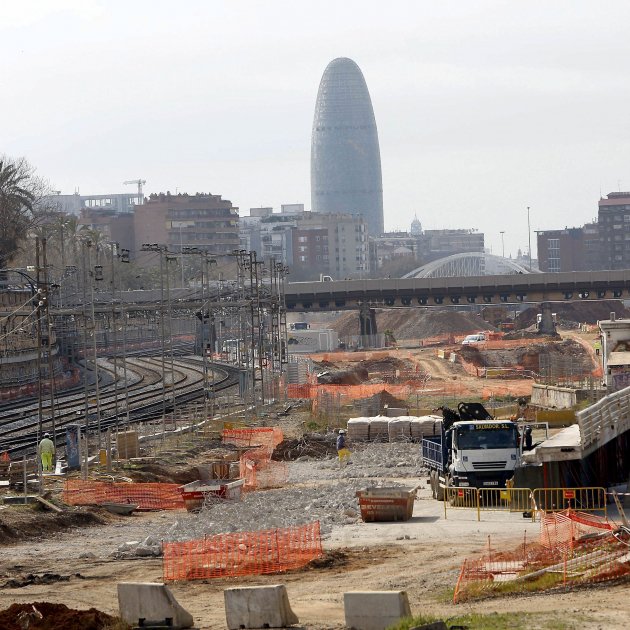Pedro Sánchez will start the long prelude to the campaign for the 2019 elections (local, regional and European) with a statutory announcement of a windfall of millions of euros in infrastructure investment for Catalonia. The leader of PSOE, who this Friday is to present his budget to the Congress without any guarantee he'll find the votes he needs, is looking to get the support of ERC and PDeCAT with the promise of finally fulfilling the investment set out in the third additional provision to the Catalan Statute of Autonomy. That planned investment, dating back to 2006, has never materialised. In fact, Spain doesn't even have a record of carrying out the investment it has put in its yearly budgets for Catalonia. Between 2015 and 2017, only 56.05% of the budgeted total would be seen in Catalonia. That's 1.22 billion euros that never appeared (£1.10 billion; $1.40 billion).
That additional provision to the 2006 Statute said that, for 7 years, the Spanish government's investment in infrastructure in Catalonia should be proportional to the ratio of Catalonia's GDP to Spain's, which in 2017 was 19%. But, at the moment of truth, that was always far from being the case. In March 2017, Mariano Rajoy promised an audience of businesspeople 4.200 billion euros (£3.75 billion; $4.81 billion) in investment for Catalonia before 2020; a promise he never kept. Will Sánchez do what his PP predecessor, Mariano Rajoy, didn't? History means we must be at least skeptical. Not even infrastructure investment being put by the state in its budget appears to be a guarantee it will actually come about.
The Spanish treasury publishes annual figures (link in Spanish), divided by autonomous community, of the percentage of budgeted works actually carried out, particularly in transport infrastructure. The numbers from recent years (see graph above) are striking: Spain has not only budgeted little for public works in Catalonia, but has also fallen far short of carrying out what it said it would.
The 2015, 2016 and 2017 budgets set out at total of 2,778,206,000€ between them for investment, but only 1,557,299,058€ of this ever materialised, 56.05%. Over 1.2 billion, therefore, remained theoretical, remained in writing: ink is very cheap.
In 2015, 895,683,000 euros were budgeted of which 536,256,488.49 were carried out: 59%. In 2016, it dropped sharply: of a stated 992,763,000 euros only 353,813,210.16 came about; that's 35.6%.
2017 uptick
In 2017, with Rajoy's promise to the entrepreneurs still freshly minted, the percentage carried out improved notably, reaching 75%. That said, the amount budgeted had also reduced to 889,760,000, of which 667,229,359.34 would be seen in Catalonia.
In both 2015 and 2016, the percentage fell under the Spanish average: 59.9% to 62.4% in 2015 and 35.6% to 37.6% in 2016. In 2017, it did however rise above the average: 75.0% to 61.5%.
Figures for 2018
As for 2018, the figures for total investment carried out have not yet been released. But the figures for the first six months of the year were headed downwards again. In Catalonia, 23.8% of that budgeted had been carried out, in the whole of Spain it was just 22.4%. In 2017, Catalonia had seen 29.1% of planned investment carried out by the same point, in 2016 the number was a pitiful 13.2% and in 2015, 18.6%. The rail sector had done best, with Renfe on 39.1%. The other end of the spectrum saw RTVE, the national broadcaster, on just 7.0%.
Main photo: Work on AVE high-speed rail at La Sagrera, Barcelona / Source: EFE
